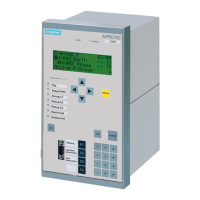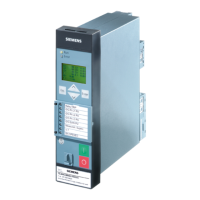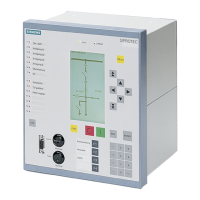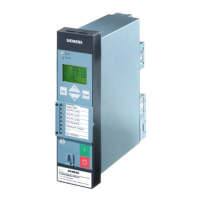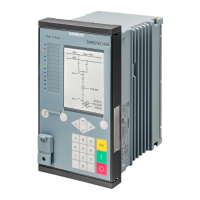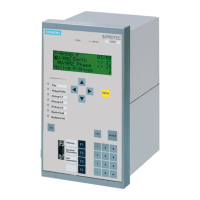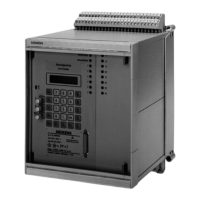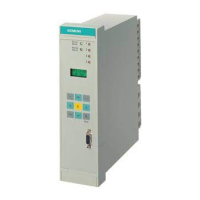Testing the Reverse Interlocking Scheme
(only if used)
Testing reverse interlocking is available if at least one of the binary inputs available is configured for this
purpose (e.g. presetting of binary input BI1
>BLOCK 50-2
and
>BLOCK 50N-2
to open circuit system). Tests
can be performed with phase currents or ground current. For ground current the corresponding ground
current settings apply.
Please note that the blocking function can either be configured for the pickup current connected (open circuit
system) or the pickup current missing (closed circuit system). For open circuit system the following tests are to
be proceeded:
The feeder protection relays of all associated feeders must be in operation. At the beginning no auxiliary
voltage is fed to the reverse interlocking system.
A test current higher than the pickup values of 50-2 PICKUP and 50-1 PICKUP or 51 PICKUP is set. As a
result of the missing blocking signal, the protection function trips after (short) time delay 50-2 DELAY.
CAUTION
Tests with currents that exceed more than 4 times the nominal device current
cause an overload of the input circuits.
²
Perform test only for a short time (see Technical Data, Section 4.1 General Device Data). Afterwards
the device has to cool off !
The direct voltage for reverse interlocking is now switched on to the line. The precedent test is repeated, the
result will be the same.
Subsequently, at each of the protection devices of the feeders, a pickup is simulated. Meanwhile, another fault
is simulated for the protection function of the infeed, as described before. Tripping is performed within time
50-1 DELAY (longer time period) (with definite time overcurrent protection) or according to characteristic
(with inverse time overcurrent protection).
These tests also check the proper functioning of the wiring for reverse interlocking.
Checking the Temperature Detection
After the termination of the RS485 port and the setting of the bus address have been verified according to
Section 3.2 Checking Connections, the measured temperature values and thresholds can be checked.
If temperature sensors are used with 2-phase connection you must first determine the line resistance for the
temperature detector being short-circuited. Select mode 6 at the RTD-Box and enter the resistance value you
have determined for the corresponding sensor (range: 0 to 50.6 Ω).
When using the preset 3-phase connection for the temperature detectors no further entry must be made.
Checking the Measured Temperature Values
For checking the measured temperature values, the temperature detectors are replaced by adjustable resistors
(e.g. precision resistance decade) and the correct assignment of the resistance value and the displayed
temperature for 2 or 3 temperature values from the following table are verified.
Table 3-16
Assignment of the resistance value and the temperature of the sensors
Temperature in °C Temperature in °F Ni 100 DIN 43760 Ni 120 DIN 34760 Pt 100 IEC 60751
–50 –58 74,255 89,106 80,3062819
–40 –40 79,1311726 94,9574071 84,270652
–30 –22 84,1457706 100,974925 88,2216568
–20 –4 89,2964487 107,155738 92,1598984
3.3.8
3.3.9
Mounting and Commissioning
3.3 Commissioning
SIPROTEC 4, 7SJ61, Manual 273
C53000-G1140-C210-6, Edition 05.2016
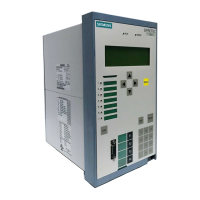
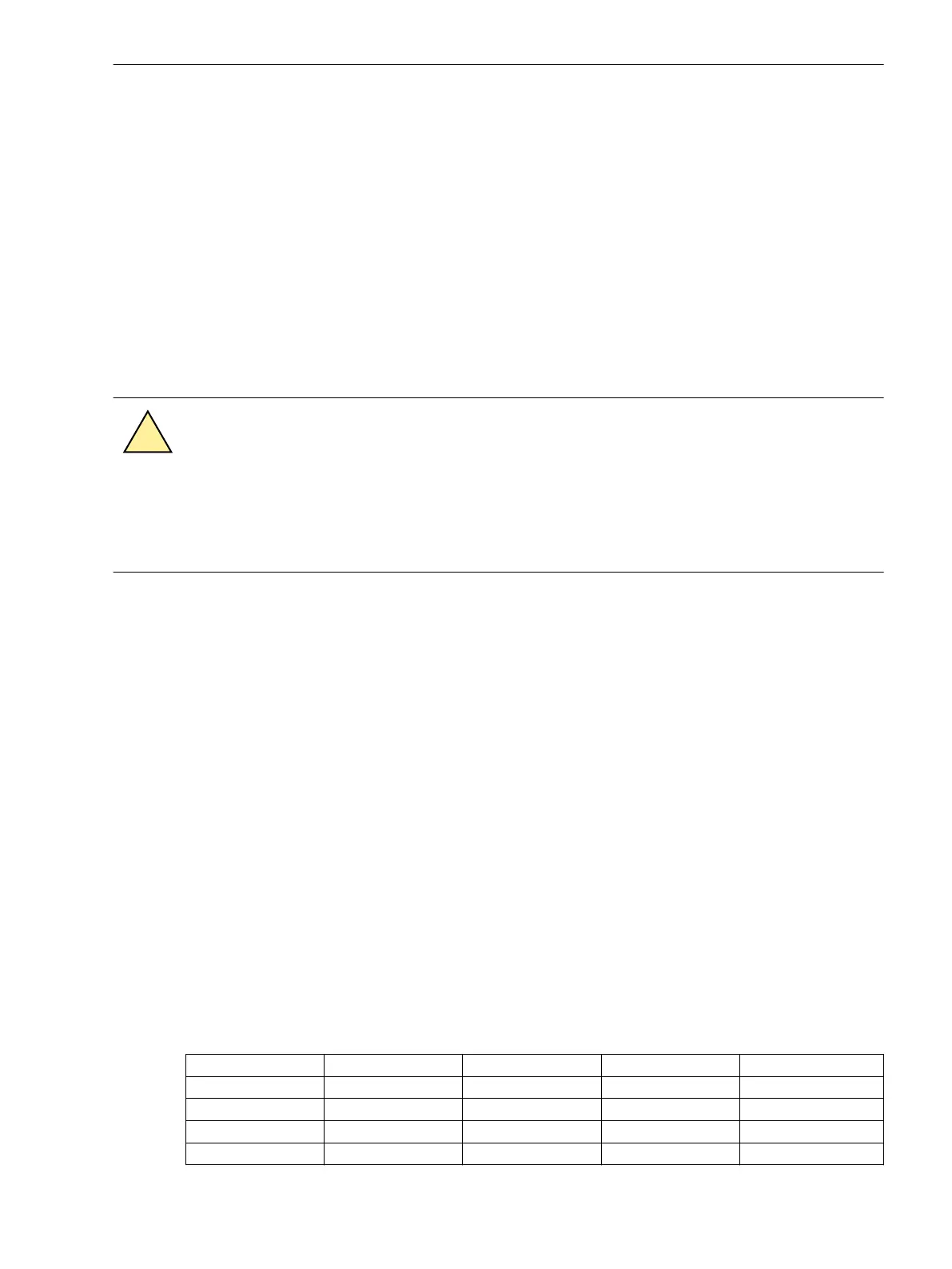